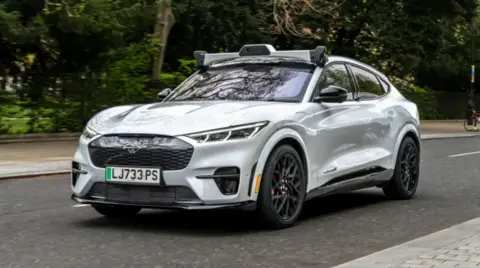On June 10, 2025, it was revealed that Uber is set to launch trials of driverless taxis in London in the spring of next year. This exciting development will mark a significant step forward for the ride-hailing app, as it partners with Wayve, a UK artificial intelligence firm. Wayve has been piloting autonomous technology on the streets of London but has had a human safety driver overseeing operations, adhering to existing regulations.
The announcement coincides with the UK government’s recent modifications to its regulatory framework surrounding driverless vehicles, aimed at expediting their introduction onto British roads. Initially, there was a target year of 2026 for the arrival of this technology, which was later pushed to the latter half of 2027. However, in a surprising shift, the government has now proposed an accelerated schedule for smaller autonomous services, such as “bus and taxi-like” operations, allowing for earlier implementation.
Nevertheless, it’s still uncertain if Uber’s upcoming trial will permit customer use of these vehicles, as they are in the process of finalizing the specifics. The firm has voiced its intention to integrate this feature into its UK app whenever the legal framework makes it possible.
The Department for Transport has projected that the adoption of driverless technology could generate approximately 38,000 jobs while delivering an impressive £42 billion boost to the British economy by the year 2035. As promising as these figures might appear, concerns have been raised about the societal impact of driverless taxis, particularly regarding potential job losses. GMB national secretary Andy Prendergast emphasized that the industry must take into account the “significant social implications” of integrating such advanced technologies.
Uber’s ambition toward autonomous taxis is not novel; the company previously launched a robotaxi service in Austin, Texas, in March 2025, which has shown promise as it operates for 20 hours a day, seven days a week. In Texas, customers have the option to choose a robotaxi when available, without any fare difference compared to traditional taxis. Additionally, competitors like Tesla are gearing up to implement similar services in Austin by June.
Globally, fully driverless vehicles have logged extensive mileage on public roads across several regions, including China, the UAE, and Singapore. Yet, comprehensive assessments regarding the safety of these vehicles compared to those driven by humans remain ongoing. Studies have indicated that autonomous vehicles may have a lower accident rate compared to human drivers; however, incidents involving robotaxis—ranging from accidents to customer entrapments—have been reported. One notable case involved a San Francisco robotaxi service that was suspended due to multiple malfunctions.
In a recent personal experience, a reporter tested Wayve’s autonomous vehicle fitted with the necessary technology across central London. During this 30-minute ride, a human safety driver was present but did not need to intervene at any point. The vehicle effectively navigated and addressed numerous urban challenges, including heavy traffic, temporary traffic signals, cyclists, and pedestrians, effectively and safely. The autonomous Ford Mach-E was outfitted with sensors, radars, and an AI-driven system to optimize real-time responses. Observers noted that the vehicle exhibited a cautious driving style, which contributed to an unexpectedly smooth and uneventful experience.
Thus, as Uber embarks on this ambitious experiment with driverless taxis, it raises essential questions about the future of transportation. The integration of autonomous vehicles into everyday life poses exciting possibilities but also necessitates careful consideration of the broader implications on employment, safety, and regulatory measures. With the UK positioning itself at the forefront of this technological evolution, the eventual outcomes will significantly shape the landscape of urban mobility.



